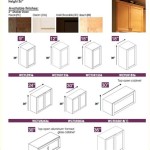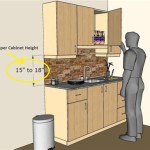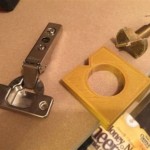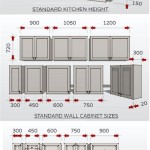Hanging Kitchen Cabinets on the Wall: A Comprehensive Guide
Transforming your kitchen cabinetry can breathe new life into your space. Hanging kitchen cabinets on the wall is a crucial step in this process, ensuring functionality, aesthetics, and overall durability. Mastering the essential aspects of this task will enable you to achieve a professional-looking and long-lasting result.
1. Planning and Preparation
Before commencing the installation, proper planning is paramount. Determine the exact placement of each cabinet, considering factors such as height, spacing, and alignment with appliances. Gather the necessary tools, including a level, measuring tape, pencil, drill, and appropriate fasteners. Ensure the wall surface is clean, even, and structurally sound.
2. Installing Wall Cleats
Wall cleats provide a secure anchor point for the cabinets. Measure and mark the desired cabinet heights on the wall using a level. Cut cleats to the appropriate length and attach them to the wall at the designated marks using screws. Space the cleats evenly to distribute the weight of the cabinetry.
3. Attaching the Base Rail
The base rail serves as the foundation for the cabinets. Cut it to the total width of the cabinet run and attach it to the bottom of the cleats using screws. Ensure the base rail is level and secure, as it will support the entire weight of the cabinetry.
4. Assembling the Cabinets
Assemble the cabinet boxes according to the manufacturer's instructions. If pre-assembled cabinets are used, skip this step. Position the cabinets on the base rail, ensuring they are level and aligned. Secure the cabinets to the base rail using screws or nails.
5. Hanging the Cabinets
Carefully lift the assembled cabinets onto the cleats. Adjust the cabinets as needed to ensure they are level and securely resting on the cleats. Use a level to verify the alignment before proceeding.
6. Cabinet Alignment
Once the cabinets are hung, it's crucial to align them precisely. Use a spacer or a piece of wood to maintain consistent spacing between the cabinets. Adjust the cabinets as necessary using shims or wedges to create a uniform and aesthetically pleasing installation.
7. Tightening and Securing
Thoroughly tighten all screws and fasteners to ensure the cabinets are securely attached. Use a drill with a screwdriver bit to ensure a firm grip. Inspect the installation for any loose connections or gaps. Address any issues promptly to prevent future problems.
Additional Tips
- Use a stud finder to locate wall studs for additional support when installing wall cleats.
- If the wall surface is uneven, use shims or furring strips to create a level base for the cabinets.
- Consider using a laser level for precise alignment of the cabinets.
- Apply a bead of caulk along the top of the cabinets to seal any gaps and prevent moisture penetration.
- Install decorative moldings or trim around the cabinets to enhance the overall aesthetics.
Conclusion
Hanging kitchen cabinets on the wall requires meticulous planning, precise measurements, and secure installation techniques. By following these essential aspects and incorporating additional tips, you can achieve a professional-looking and functional cabinetry system that will enhance the beauty and functionality of your kitchen for years to come.

Installing Kitchen Cabinets Momplex Vanilla Ana White

How To Install Kitchen Cabinets Diy Family Handyman

How To Install Kitchen Wall And Base Cabinets Builder Supply
Wall Cabinet Kitchen Hanging Balcony Locker Bathroom Ee Es

How To Install Cabinets Like A Pro Installing Kitchen Wall

The Trick To Hanging Kitchen Wall Cabinets Ron Hazelton

How To Install Wall And Base Kitchen Cabinets Using The Best 14 Steps

How To Hang Cabinets Level And Straight By Yourself

Kitchen Wall Hanging Cabinet Design For Dining Room China Furniture Made In Com

How To Install Kitchen Wall Cabinets Like A Professional Dailey Manufacturing Co
Related Posts








